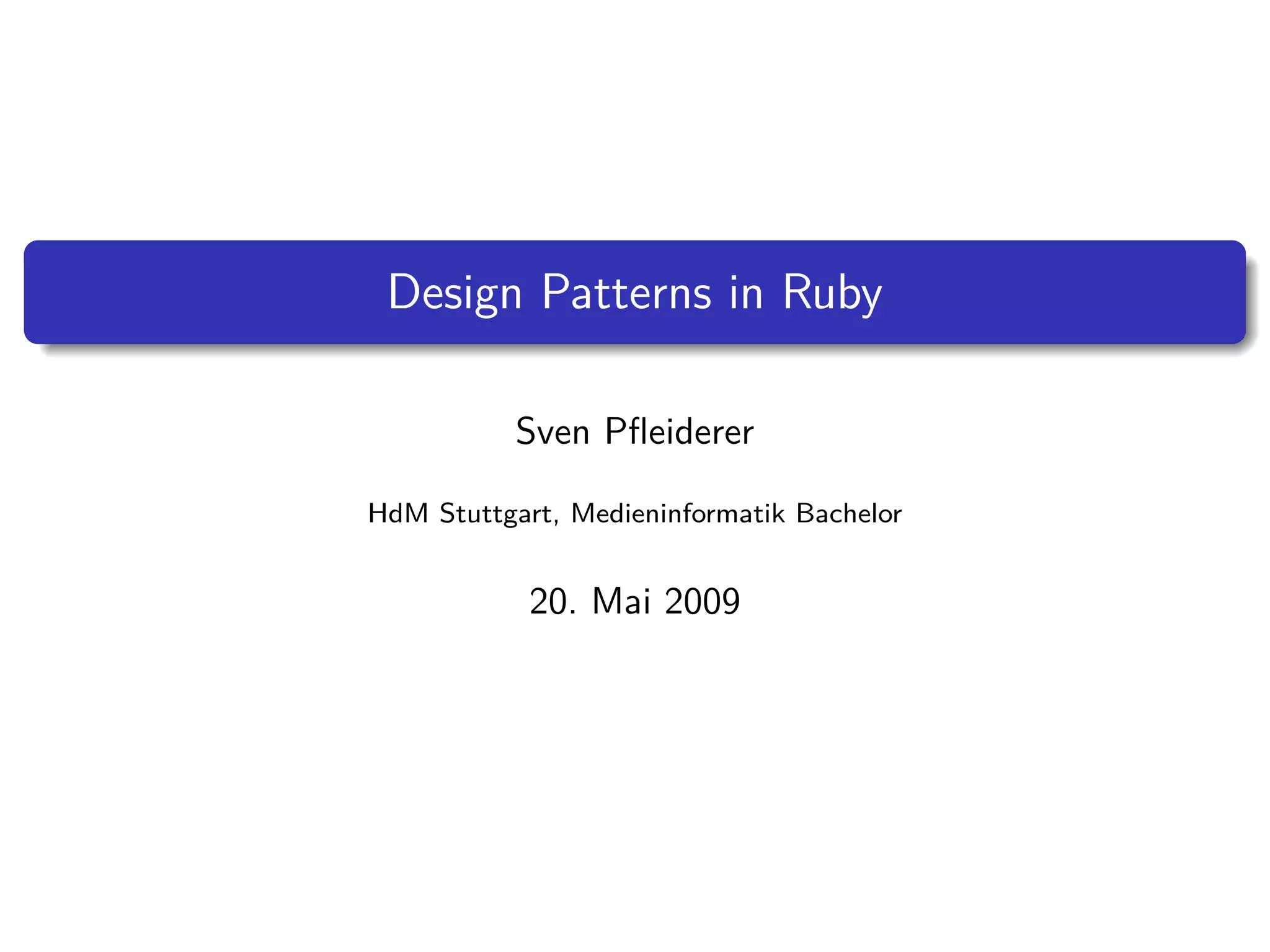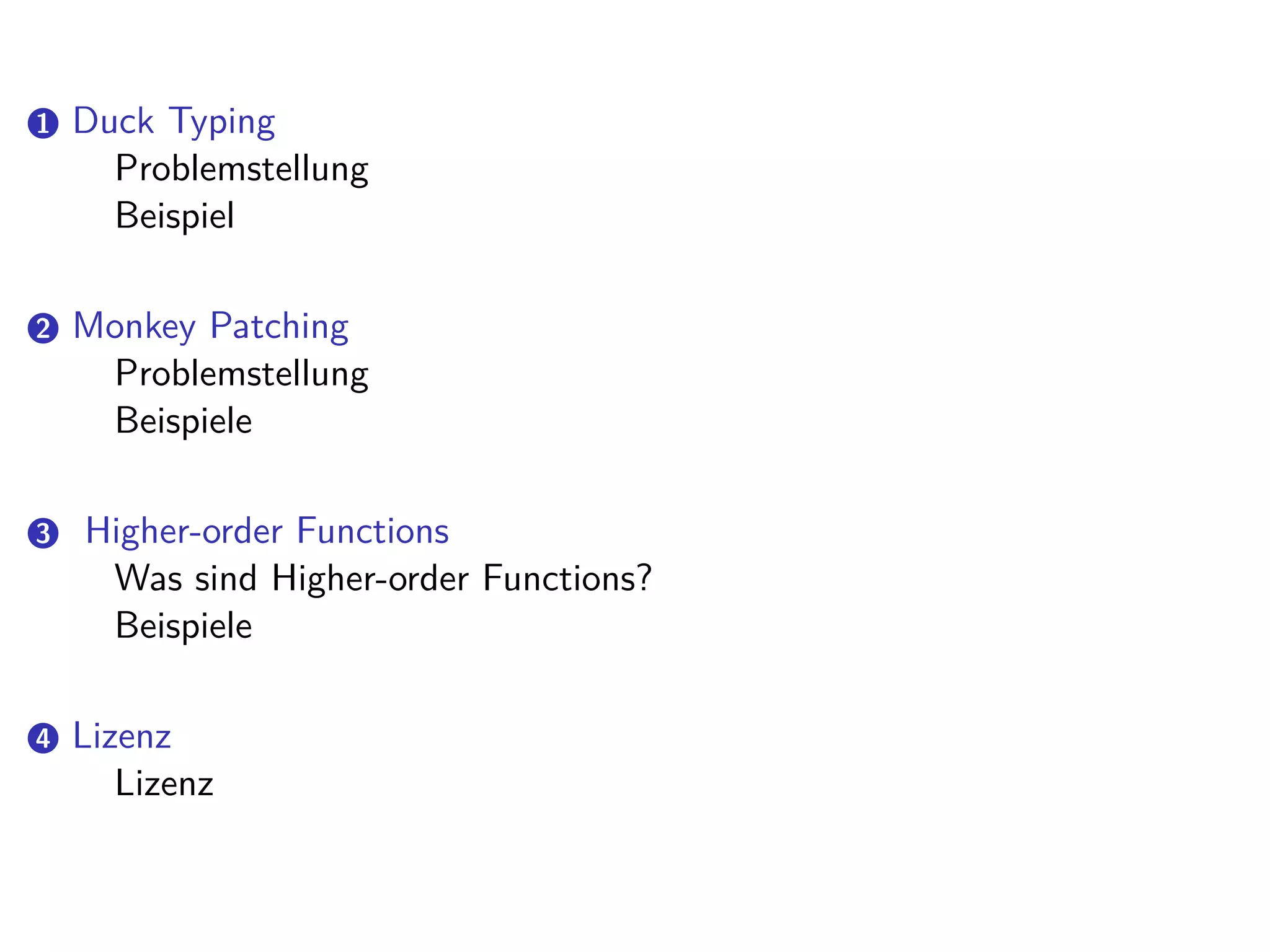Präsentation einbetten
16-mal heruntergeladen






















Das Dokument behandelt verschiedene Designmuster in Ruby, einschließlich des Duck Typings, Monkey Patchings und höherer Funktionen. Duck Typing ermöglicht es, Objekte durch ihre Methoden und Eigenschaften zu definieren, während Monkey Patching die Anpassung bestehender Klassen zur Erweiterung oder Fehlerbehebung erlaubt. Höhere Funktionen sind Funktionen, die als Werte behandelt werden und andere Funktionen als Argumente annehmen oder zurückgeben können.





















